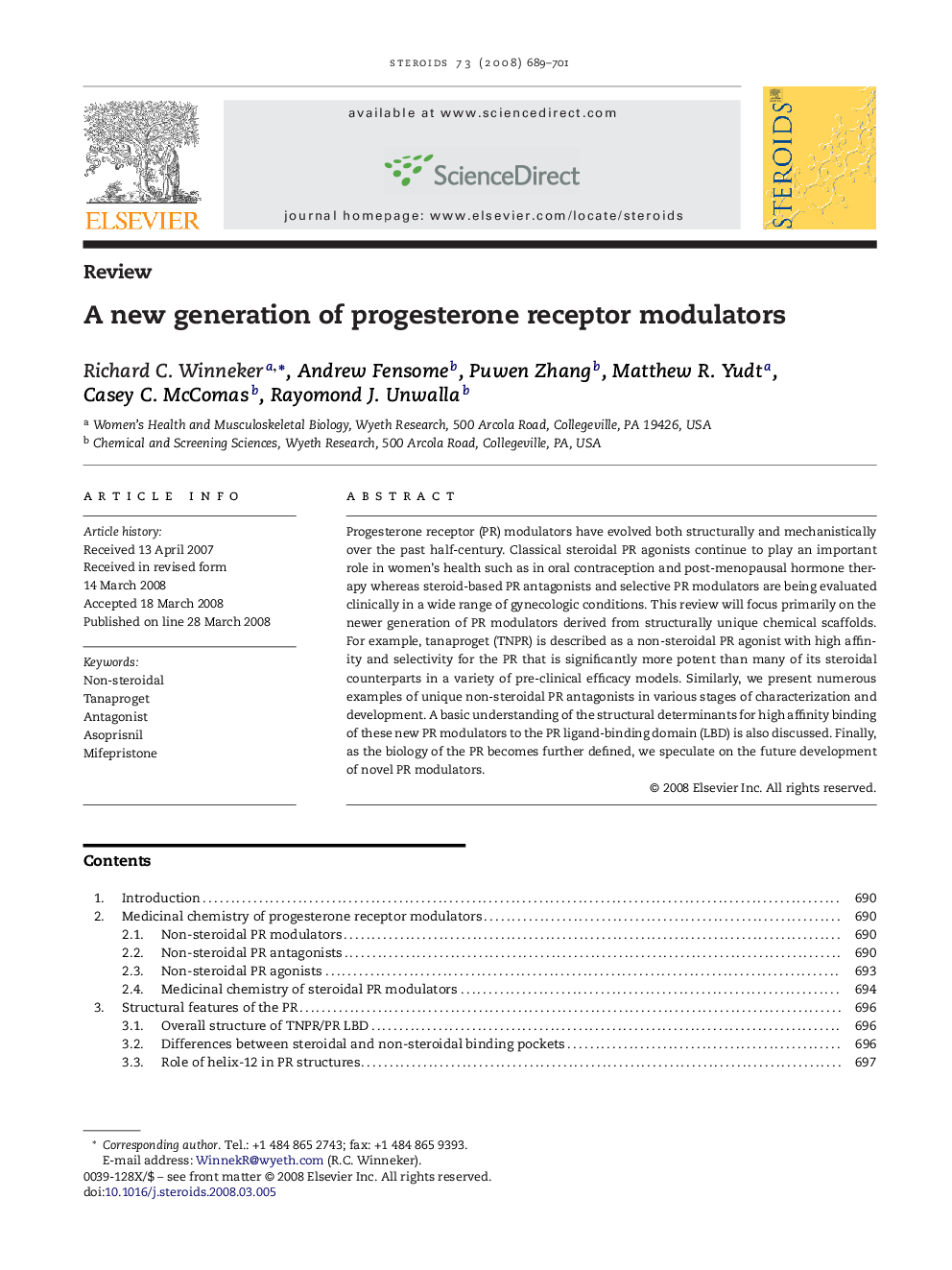| کد مقاله | کد نشریه | سال انتشار | مقاله انگلیسی | نسخه تمام متن |
|---|---|---|---|---|
| 2028608 | 1070430 | 2008 | 13 صفحه PDF | دانلود رایگان |

Progesterone receptor (PR) modulators have evolved both structurally and mechanistically over the past half-century. Classical steroidal PR agonists continue to play an important role in women's health such as in oral contraception and post-menopausal hormone therapy whereas steroid-based PR antagonists and selective PR modulators are being evaluated clinically in a wide range of gynecologic conditions. This review will focus primarily on the newer generation of PR modulators derived from structurally unique chemical scaffolds. For example, tanaproget (TNPR) is described as a non-steroidal PR agonist with high affinity and selectivity for the PR that is significantly more potent than many of its steroidal counterparts in a variety of pre-clinical efficacy models. Similarly, we present numerous examples of unique non-steroidal PR antagonists in various stages of characterization and development. A basic understanding of the structural determinants for high affinity binding of these new PR modulators to the PR ligand-binding domain (LBD) is also discussed. Finally, as the biology of the PR becomes further defined, we speculate on the future development of novel PR modulators.
Journal: Steroids - Volume 73, Issue 7, August 2008, Pages 689–701